Mandu-guk (Korean Dumpling Soup)
This 15-minute Mandu-guk uses store-bought frozen dumplings, sliced rice cakes, and a light savory broth for the quickest Korean dumpling soup. Cozy, comforting, and perfect when you need a fast Korean meal.

When I want something warm and comforting fast, Mandu-guk (만두국) is the soup I reach for. Frozen dumplings simmer into a satisfying bowl in minutes, which is why I always keep a few bags in my freezer.
Even as someone who develops most Korean recipes from scratch, I make Mandu-guk the quick way — with store-bought frozen dumplings. It’s the easiest 15-minute Korean soup when I don’t want to make a full batch of homemade dumplings.
On special holidays like New Year’s Day, I do make mandu from scratch and cook a full, traditional mandu-guk. I usually freeze extra dumplings too — they’re perfect for dropping into tteokguk when I want something even cozier.
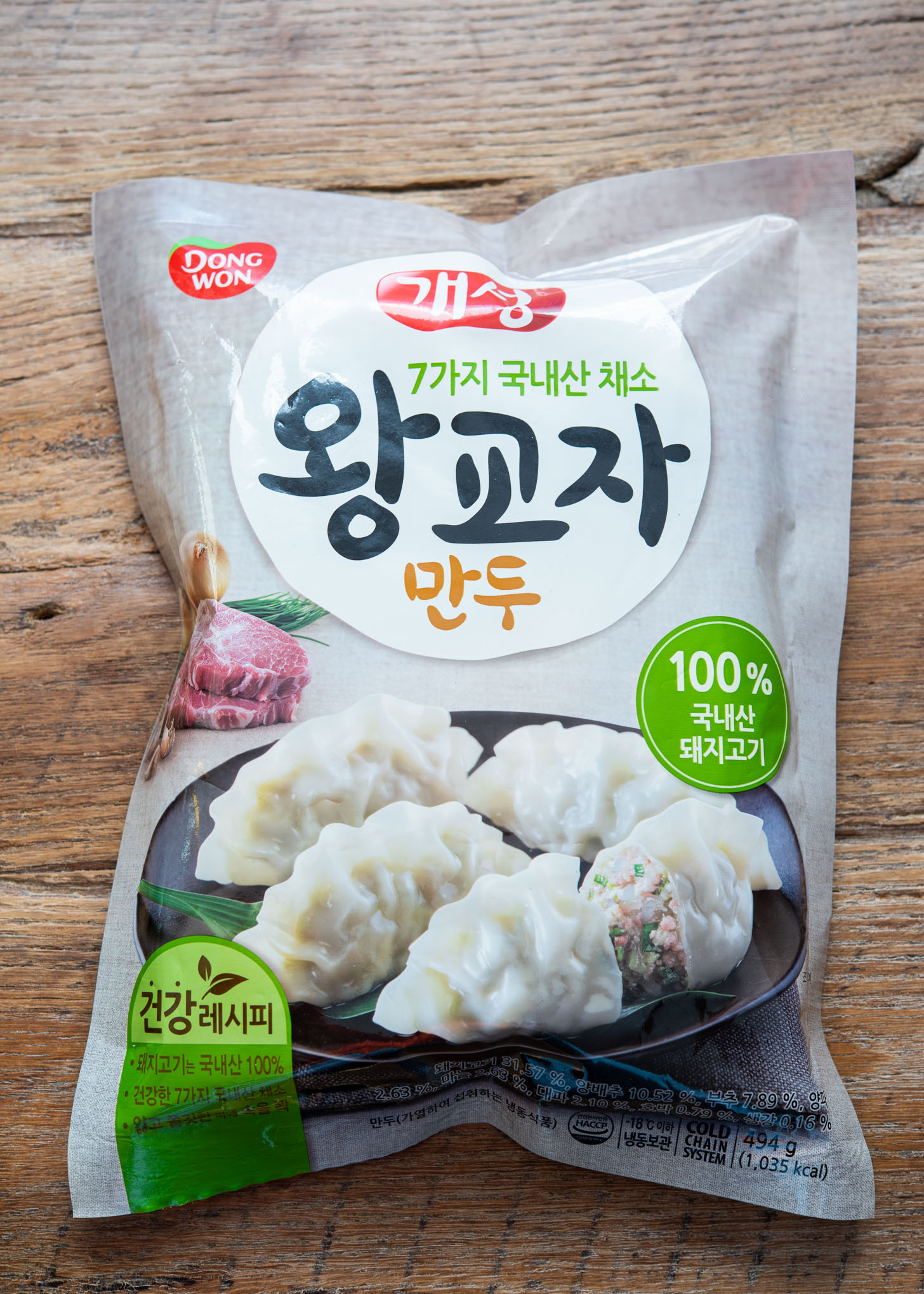

Choosing Dumplings for Mandu-guk
You can use any Korean frozen dumplings you like, but here’s what works best in soup:
- Pork mandu: most flavorful and holds up well – my favorite.
- Kimchi mandu: adds a subtle spicy kick
- Shrimp or chicken mandu: lighter, good for clear broths
- Vegetable mandu: great for a mild, clean-tasting soup
If using large mandu, keep the heat at a gentle simmer so they don’t burst. Smaller crescent-shaped dumplings soften faster and make the soup feel more delicate.
I often use brands like Bibigo, Pulmuone, or O’Food, which stay firm in broth and cook evenly.
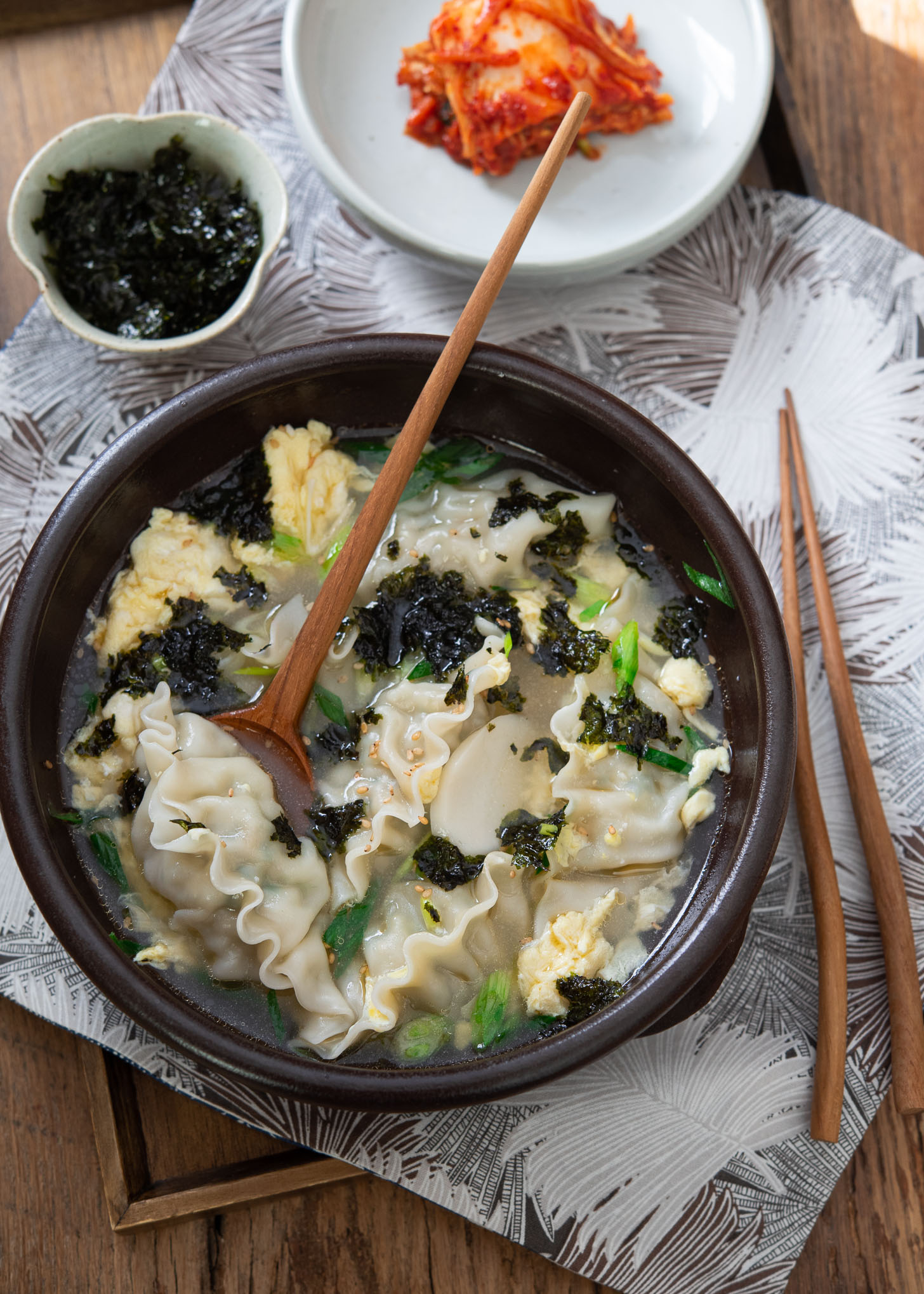
Soup Base Options
Mandu-guk works with several broths, but each gives a different flavor:
- Anchovy broth: my go-to for the cleanest, most traditional taste
- Beef broth: richer and heartier
- Chicken broth: lighter, easy, and great for beginners
- Vegetable broth: mild and balanced
- Sagol (ox bone broth): a deeper, richer version, not traditional but delicious. Packaged beef bone broth is readily available at Korean grocery stores and online.
How to make Mandu-guk (Korean Dumpling Soup)
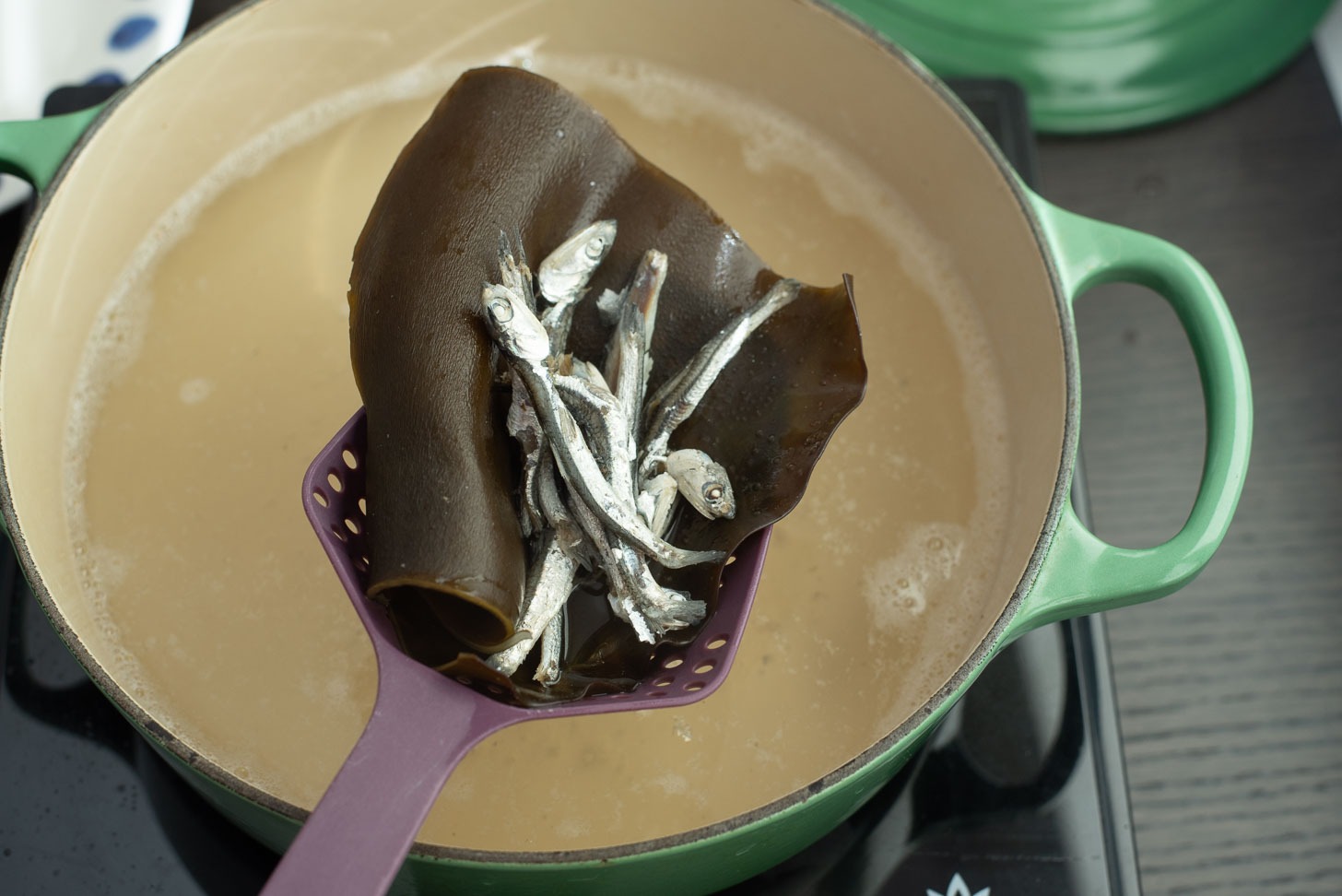
Make the Broth. For a clean, light base, simmer dried anchovies and a small piece of kelp for a few minutes, then strain them out. This quick anchovy broth is classic for Mandu-guk, but chicken or beef broth works too — just bring it to a gentle simmer before adding the dumplings.
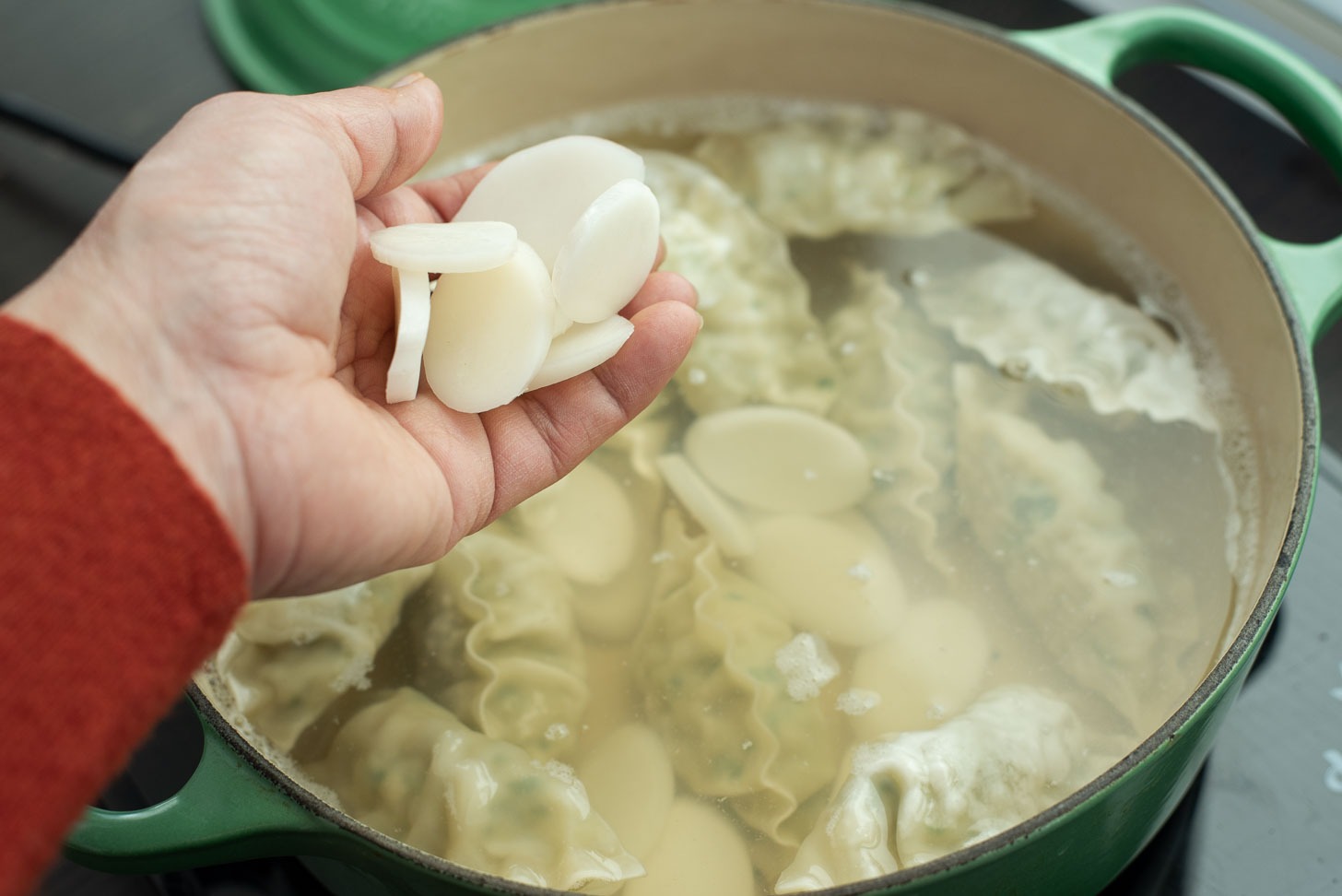
Add the Dumplings (and Rice Cakes, if using). Add the frozen dumplings straight into the simmering broth. They’ll soften and float as they cook. If you’re adding sliced tteok, put them in now — they take about the same amount of time to turn tender.
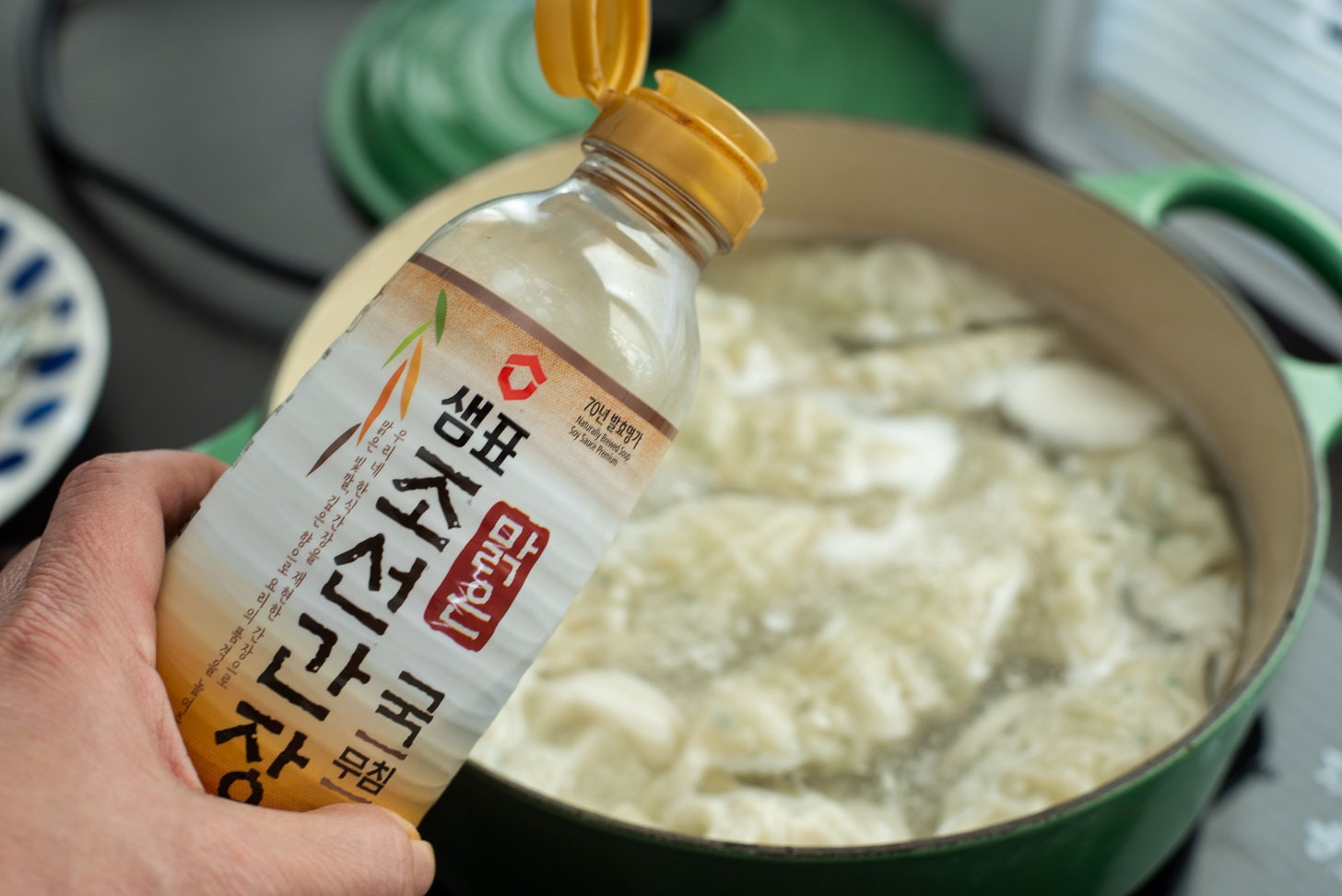
Season the soup. Stir in a little garlic and season with Korean soup soy sauce. Soup soy sauce keeps the broth light in color and adds deeper umami than regular soy sauce. Taste and adjust with salt as needed — different dumplings season the broth differently.
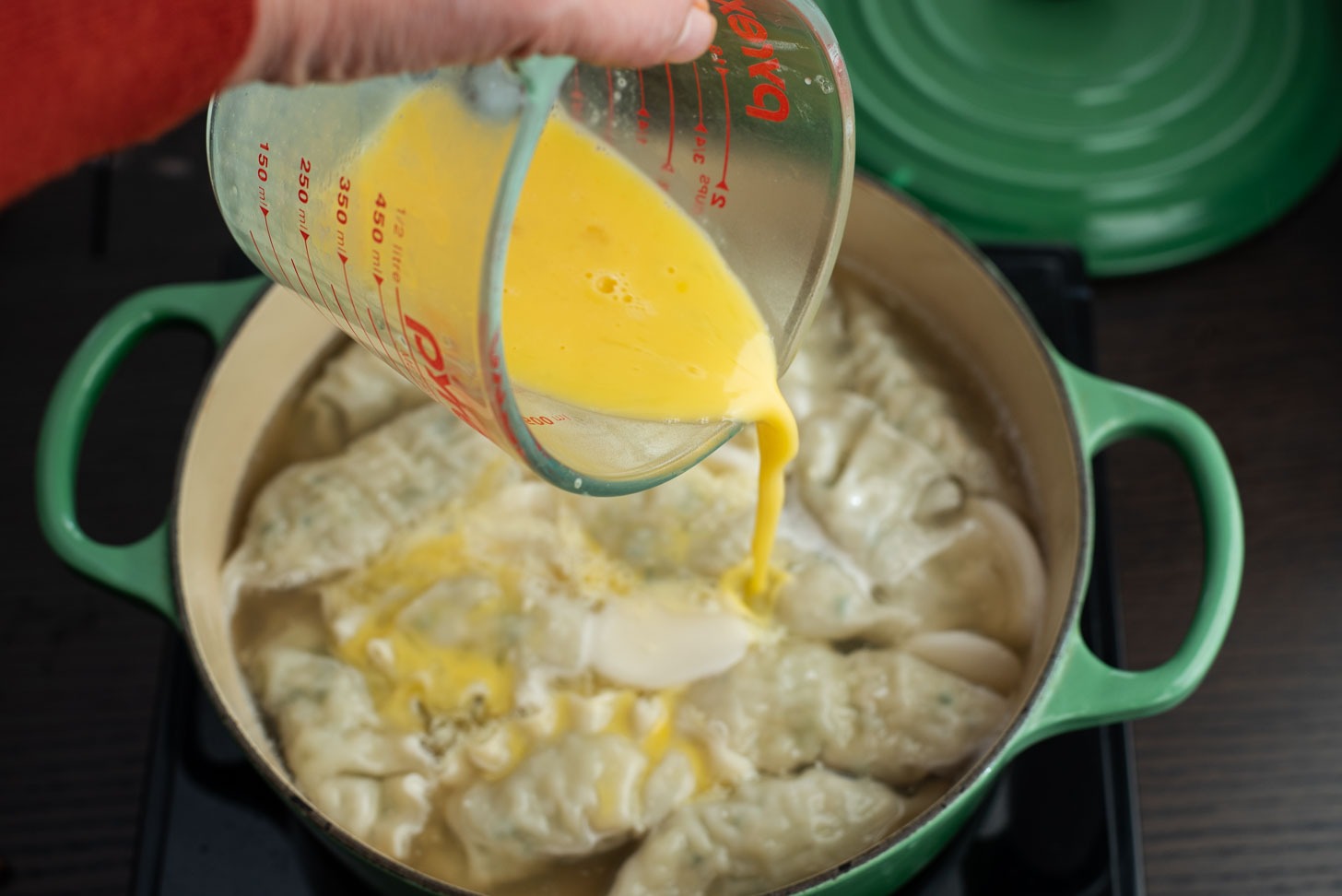
Swirl in the Eggs. Beat the eggs with a splash of water (my go-to trick for silkier strands), then drizzle them into the soup in a slow swirl. Give it a light stir and let the eggs set into soft ribbons.

Finish and Serve. Turn off the heat and add green onion, a touch of sesame oil, and black pepper. The sesame oil adds a warm, nutty aroma that makes the whole bowl feel extra cozy.
The Best Way to Enjoy Mandu-guk
Serve Mandu-guk in warm bowls and finish with a sprinkle of crumbled roasted seaweed for extra flavor and texture. I always pair this soup with kimchi—my quick radish kimchi is especially good here because its crisp, tangy bite balances the soft dumplings beautifully.
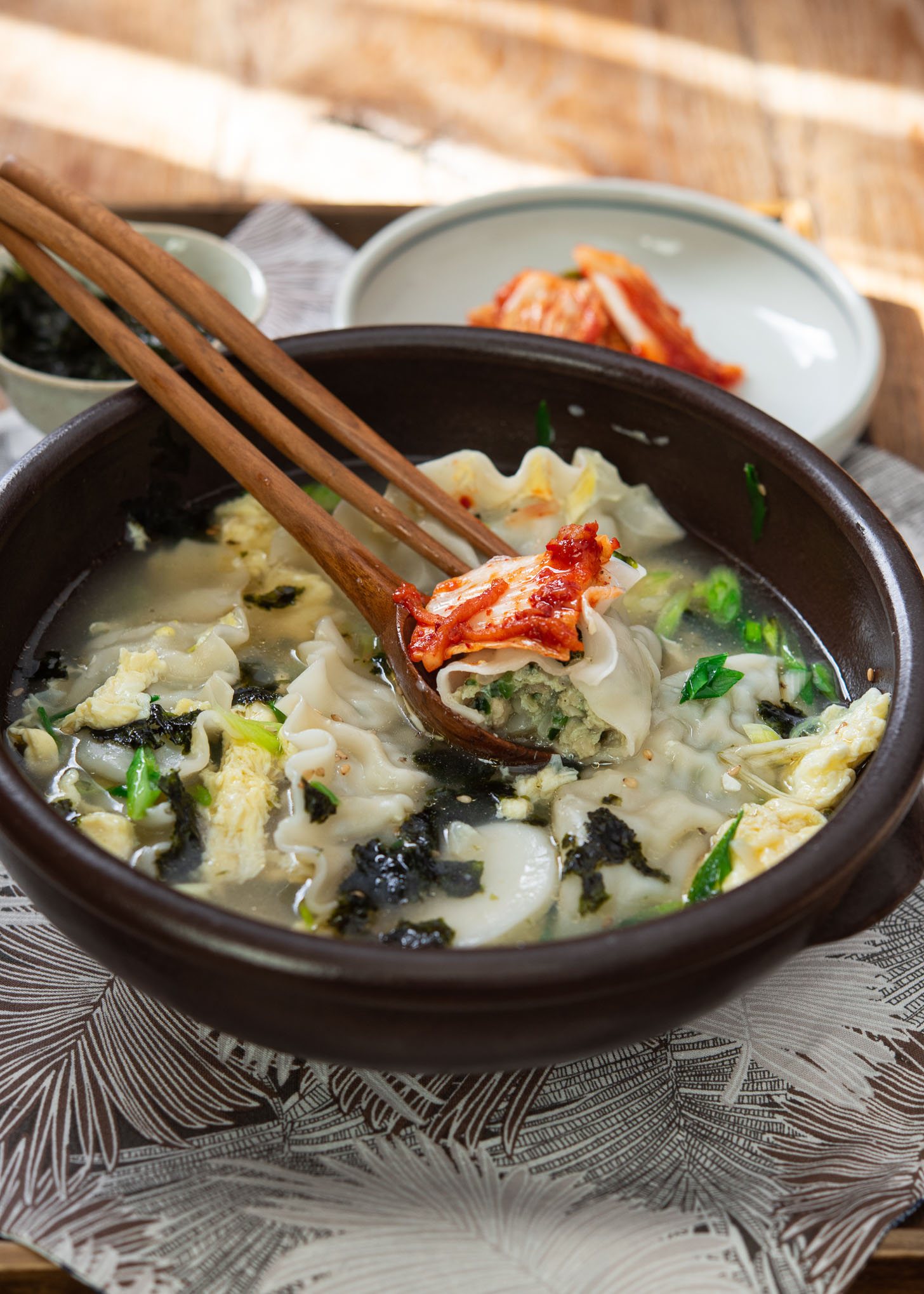
Love this recipe? Rate it and share your experience in the comments below! On Instagram? Tag me to showcase your creation. For more delicious recipes, subscribe to our newsletter!

Mandu-guk (Korean Dumpling Soup)
Ingredients
- 5 cup (1.2 L) anchovy stock or other stock of your choice, See note below.
- 1 lb (450 g) large Korean dumplings (about 12), or other Asian dumplings
- 1 handful (about 80 g) Korean rice cake rounds, optional
- 2 cloves garlic, finely minced
- 2 eggs
- 1 tbsp (15 ml) Korean soup soy sauce (gukganjang)
- salt , to taste
- 2 tsp (10 ml) sesame oil
- 1 green onion, chopped
- 1/4 cup (4 g) crumbled roasted seaweed sheet, optional
For the anchovy stock
- 5 cup (1.2 L) water
- 10 dried anchovies, cleaned
- 1 piece (about 10 × 10 cm) large dried sea kelp
Instructions
- To make anchovy stock, combine water with dried anchovies and sea kelp in a soup pot and bring to boil. Let the stock simmer for 4-5 minutes over low heat. Discard the anchovies and sea kelp.
- Add dumplings and rice cake rounds (if using). Bring the soup to a boil and then simmer over medium heat until the dumplings are cooked and the rice cakes are soft. The dumplings will float on top when they are fully cooked.
- Add garlic and season the soup with Korean soup soy sauce and salt.
- Beat eggs with 1 tablespoon of water in a bowl and slowly add to the soup in a swirling motion. Gently stir the eggs, just a couple of stokes. Let the heat in the soup cook the eggs, about 30-60 seconds..
- Turn off the heat, and add sesame oil and green onion to garnish. Sprinkle with black pepper to your taste. Divide the soup into serving bowls. Serve the soup hot with kimchi on the side. As an option, I recommend that you serve the soup topped with crumbled roasted seaweed.
Notes
- beef broth
- chicken broth
- vegetable broth
- bone broth (bone-marrow soup)

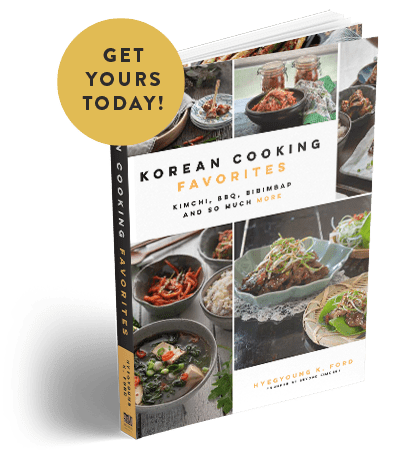
Excellent. Great to use frozen dumplings. Rice cakes are growing on me.
Quick and very tasty. This will be a weeknight regular!